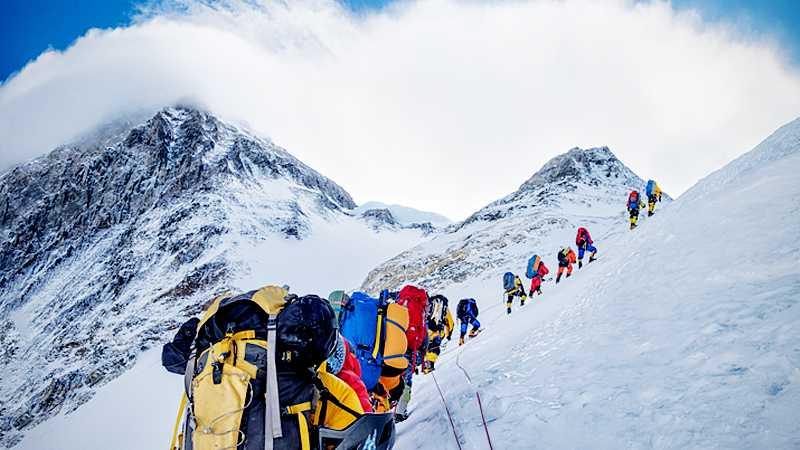What Happens to Your Body When You Climb Everest
Curated from: outsideonline.com
Ideas, facts & insights covering these topics:
7 ideas
·1.23K reads
4
Explore the World's Best Ideas
Join today and uncover 100+ curated journeys from 50+ topics. Unlock access to our mobile app with extensive features.
Climbing Everest
It’s almost impossible to imagine the immense physical and psychological challenge of climbing to the top of 29,029-foot Mount Everest.
Even at Base Camp, at 17,600 feet, there's about 50 percent of the oxygen in the air as there is at sea level.
23
239 reads
Your brain while climbing Everest
As you climb, less oxygen in your blood means less oxygen in your brain.
At 15,000 feet, your cognitive performance, mood, and central nervous system functioning start to lessen. In severe cases, being at high altitude for long periods or without first acclimatizing, you are at a higher risk for swelling of the brain, (high-altitude cerebral edema - HACE.)
26
178 reads
Your lungs while climbing Everest
If you ascend without proper acclimatization, at around 9,000 feet, your lungs may begin to swell because the blood vessels constrict. Symptoms include a persistent cough and labored breathing.
If the swelling in your lungs worsens, high-altitude pulmonary edema (HAPE) can occur. Symptoms are a bluish discoloration of the skin, rapid breathing, and fever. The most effective treatment is to descend immediately.
24
168 reads
Your heart while climbing Everest
In order to supply your body with enough oxygen to maintain functioning, your heart must work harder. You will have an increased heart rate and greater force per beat. Your body creates more oxygen-carrying red blood cells, which is generally helpful.
However, it also thickens your blood and could precipitate heart attacks in those susceptible to it.
23
150 reads
Your eyes while climbing Everest
At high altitudes, the low oxygen can cause spasms in the arteries that supply blood for your sight, causing transient blindness in some climbers.
Increased ultraviolet radiation can lead to inflammation of the cornea, causing snow blindness.
25
158 reads
Your gut while climbing Everest
Due to a lack of oxygen in the intestines, digestion slows down. As a result, 81 percent of mountaineers experience nausea or vomiting.
Most of those climbing Everest become anorexic, especially as they approach the peak.
23
164 reads
Hands, Feet, Ears, and Nose while climbing Everest
During exposure to frigid temperatures like those on Everest, you can suffer from frostbite.
The best way to prevent frostbite is to ensure you have the highest-quality mittens, socks, boots, and headgear.
24
176 reads
IDEAS CURATED BY
Rachel P.'s ideas are part of this journey:
Learn more about health with this collection
The importance of practice and repetition in learning
How to stay motivated and avoid burnout while learning
How to break down complex concepts into manageable parts
Related collections
Similar ideas
1 idea
Effects of high altitude on humans
en.wikipedia.org
7 ideas
Diabetes: Types, Risk Factors, Symptoms, Tests, Treatments & Prevention
my.clevelandclinic.org
4 ideas
What To Do When Worry Keeps You Awake
mindful.org
Read & Learn
20x Faster
without
deepstash
with
deepstash
with
deepstash
Personalized microlearning
—
100+ Learning Journeys
—
Access to 200,000+ ideas
—
Access to the mobile app
—
Unlimited idea saving
—
—
Unlimited history
—
—
Unlimited listening to ideas
—
—
Downloading & offline access
—
—
Supercharge your mind with one idea per day
Enter your email and spend 1 minute every day to learn something new.
I agree to receive email updates

